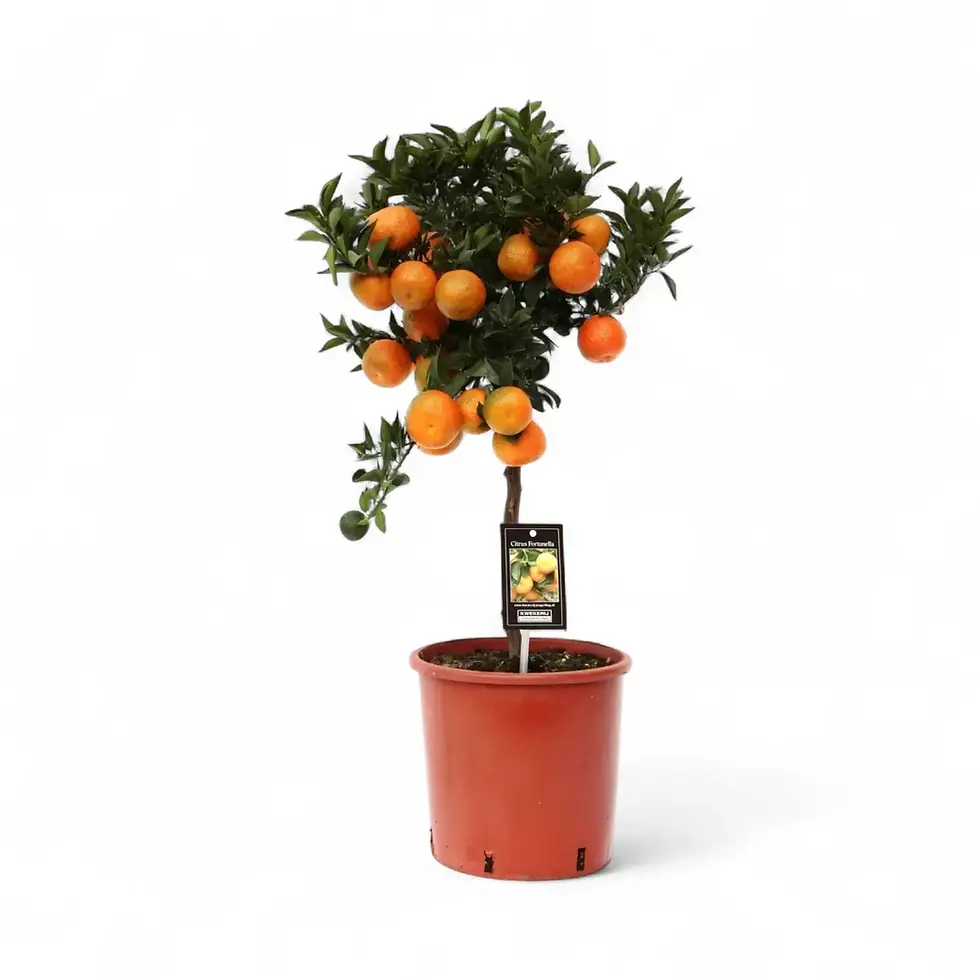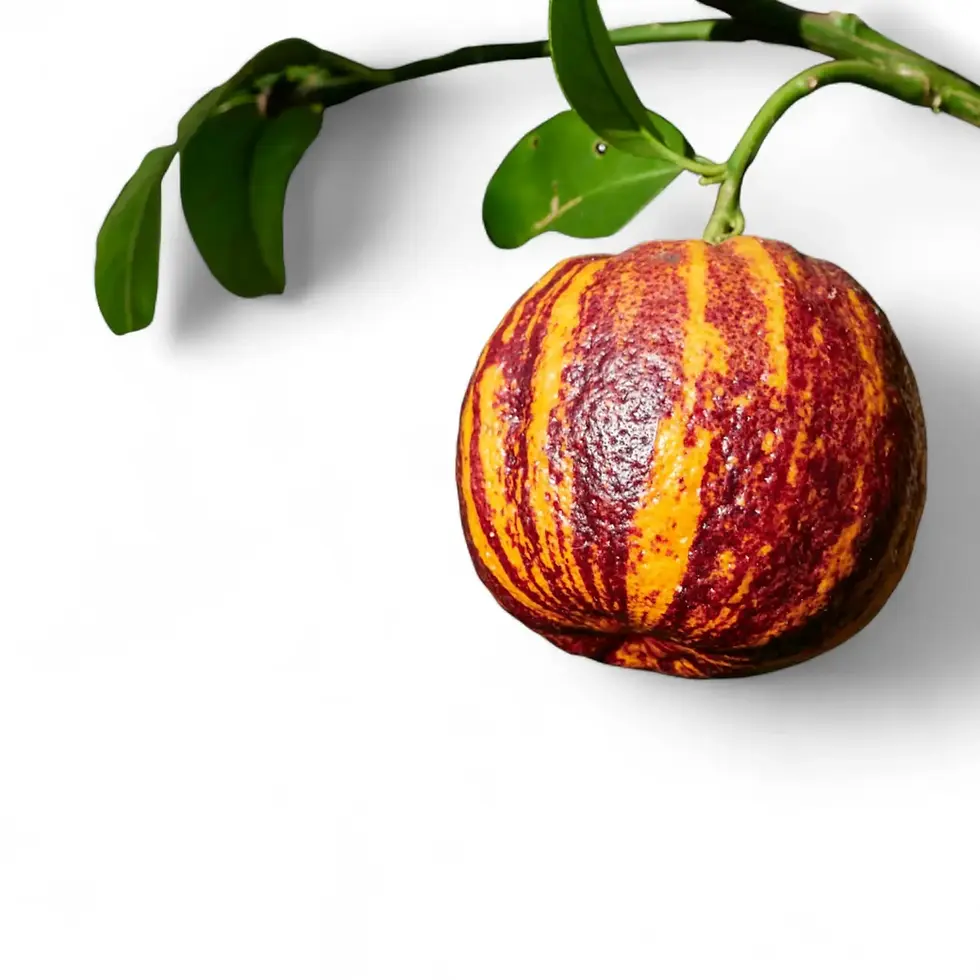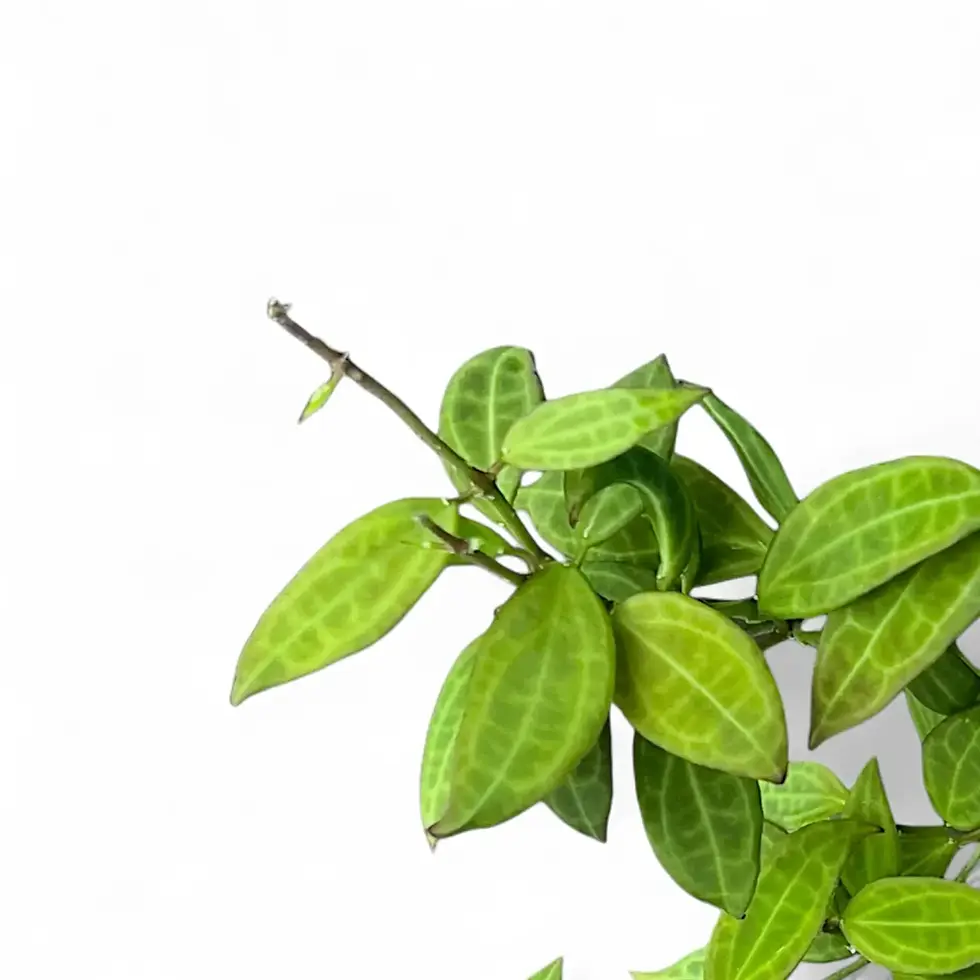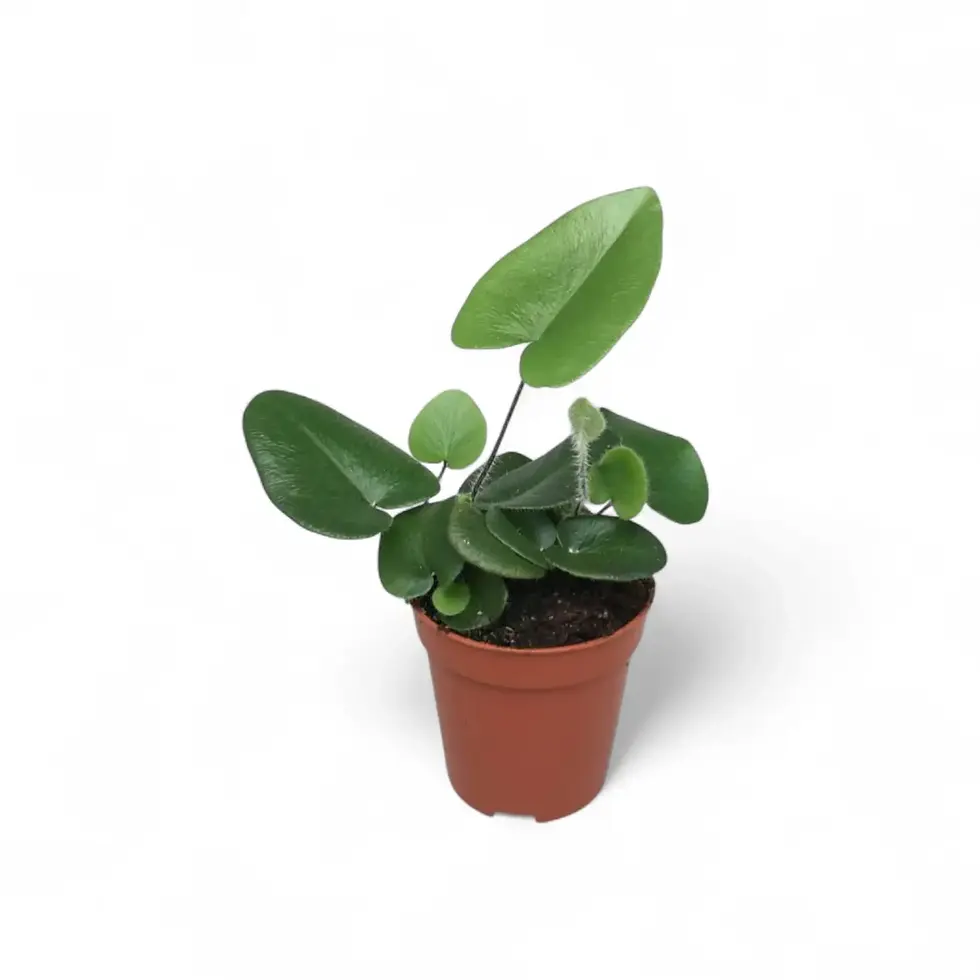Ficus elastica 'Tineke' – Elegant Variegation, Easy Indoor Care
Ficus elastica 'Tineke' is a striking variegated rubber plant with creamy, minty green leaves and soft pink tones on new growth. With its sculptural upright form and painterly foliage, this cultivar adds instant polish to shelves, corners, and workspaces. It’s both a visual focal point and a low-maintenance companion for modern interiors.
Key Features of Ficus elastica 'Tineke'
- Foliage: Broad, oval leaves with marbled cream, soft green, and pink tints
- Growth: Upright, slow-growing tree-like habit; typically reaches 1–1.5 m indoors
- Leaf texture: Glossy, leathery, and thick, offering resilience in indoor spaces
- Latex warning: Contains sap that can irritate skin and is toxic if ingested
Natural Habitat and Botanical Context
- Origin: Species native to India, Nepal, Malaysia, and Indonesia
- Habitat: Tropical forests with warm, humid air and filtered sunlight
- Species: Ficus elastica Roxb. ex Hornem., formally described in 1814
- Cultivar: 'Tineke' is a modern horticultural selection prized for its variegation
How to Care for Ficus elastica 'Tineke'
- Light: Prefers bright, indirect light. Tolerates medium light but avoid direct sun to protect variegation.
- Watering: Water when the top 15-20% of soil are dry. Drain excess water to avoid rot.
- Humidity: Regular indoor humidity is fine. Misting or grouping with other plants helps in drier air.
- Temperature: Ideal range is 18–24 °C. Protect from cold air or rapid changes.
- Soil: Use a well-draining mix with coco coir, bark, and perlite.
- Fertilizer: Apply a balanced liquid feed every 4–6 weeks year-round at half strength.
- Repotting: Every 2–3 years or when rootbound. Choose a pot with drainage holes.
- Pruning: Trim for shape or to encourage branching. Cut above a node using clean tools.
Common Issues and Solutions
- Leaf drop: Caused by inconsistent watering or sudden environment changes. Keep light and watering stable.
- Brown edges: Often due to dry air or skipped watering. Raise humidity and adjust your routine.
- Yellow leaves: Can signal overwatering. Let soil dry out before the next watering.
- Pests: Watch for spider mites or mealybugs. Treat with insecticidal soap or neem oil.
- Root rot: Prevent by using airy soil and never letting water pool in the pot tray.
Extra Tips for Healthy Growth
- Placement: Near a north or east-facing window is ideal. Rotate the pot occasionally for even light.
- Support: Use a stake if the plant grows tall and top-heavy.
- Leaf care: Gently clean dust with a damp cloth or plant gloves to keep leaves vibrant.
Etymology and Naming
The genus Ficus means "fig" in Latin and includes hundreds of tree and shrub species. The name elastica refers to the latex sap used in early rubber production. While 'Tineke' is not a botanically registered name, it is widely accepted in the houseplant world for this pastel-toned variegated rubber plant.
FAQs – Ficus elastica 'Tineke'
- How often should I water it? When the top 15-20% of soil is dry. Avoid soggy soil to prevent root issues.
- Can it grow in low light? It tolerates low light but produces fuller, brighter leaves in indirect sunlight.
- Is it safe around pets? No. It's toxic to pets and humans if ingested and the sap may irritate skin.
Order Your Ficus elastica 'Tineke' Today
Bring soft color and easy-care beauty into your home with Ficus elastica 'Tineke'. Its painterly leaves and sculptural shape make it a favorite for plant lovers and design fans alike. Order now and enjoy a modern houseplant that blends art and resilience.
Ficus elastica 'Tineke'
Ficus elastica 'Tineke' comes in following sizes:
Baby Plant – ⌀ 6 cm pot and is approximately 15 cm tall
S – ⌀ 12 cm pot and is approximately 35 cm tall
M – ⌀ 17 cm pot and is approximately 50 cm tall
L – ⌀ 24 cm pot and is approximately 65 cm tall
XL – ⌀ 27 cm pot and is approximately 90 cm tall
XXL – ⌀ 27 cm pot and is approximately 150 cm tall































